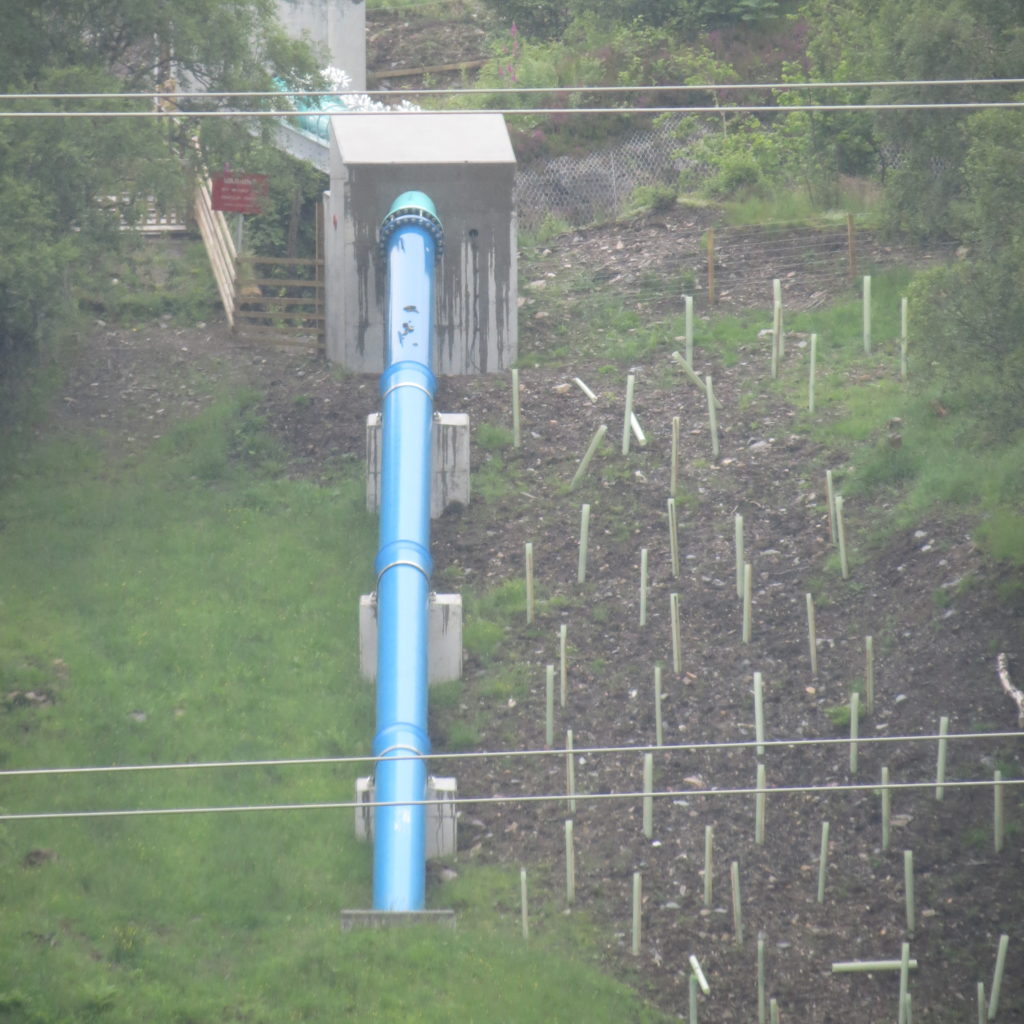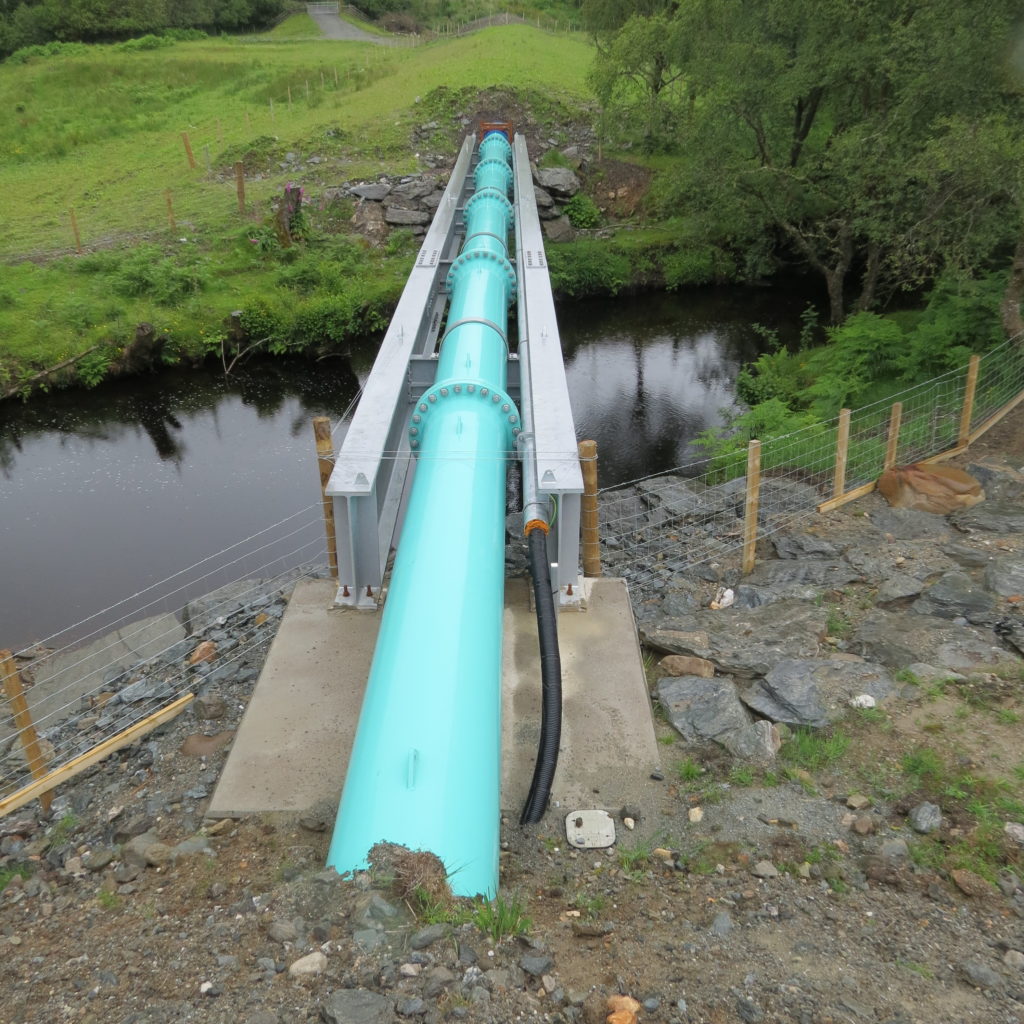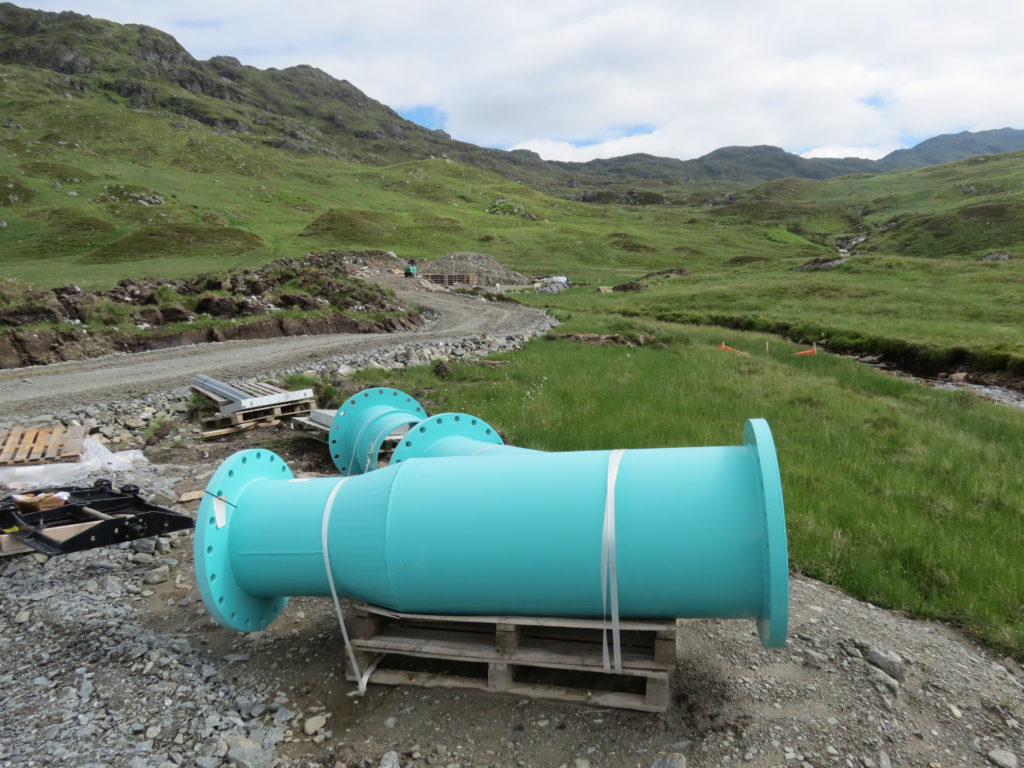I was out last Sunday taking a look at the Glen Falloch hydro schemes which I had not yet visited. In an earlier post I was very critical of the Loch Lomond and Trossachs National Park for setting out no firm rules about what locations might be suitable for hydro schemes https://parkswatchscotland.co.uk/2016/05/24/glen-falloch-hydro-schemes-2/ . The very last section of its Supplementary Planning Guidance on Renewables though has a section on “Best Practice and Mitigation Measures for Renewables in LLTNPA” which contains some excellent requirements in terms of detailed design and restoration SPG-Renewables-final
The problem in Glen Falloch is that there is extensive evidence that the LLTNPA’s own guidance has not been followed. This is not all the fault of the LLTNPA, because it was the Scottish Government that was responsible for approving the hydro schemes, although the LLTNPA is responsible for enforcing the conditions attached to the planning consent. Since the Scottish Government consulted LLTNPA before agreeing to grant planning permission it is quite difficult to ascertain exactly where responsibility lies. I plan therefore to focus on what in wrong with the schemes in relation to the Park’s own guidance over several posts, starting with the most obvious breach.
Anyone who has driven north up the A82 in the last year may have observed a bright blue pipe on the left. This is a penstock which feeds waters from the Eas Eonan into the Derrydarroch power station. The first time I saw it I wondered why a bright blue pipe had been allowed in our National Park.
The Park’s Guidance on this makes interesting reading:
Penstocks above ground should follow existing linear features such as watercourse or road routes, and be of a colour matching ground cover features, however it is expected that the penstock will be underground wherever possible.
So, why was planning permission granted to install this penstock? I am not a technical expert and therefore cannot say whether it might have been possible to underground this section of pipe, as was done on the hillside above, but it certainly does not match the ground cover.
While you may only glimpse this section of pipe while speeding by in a car, if you are walking the West Highland Way its in full view from the end of the first of the River Falloch meltwater gorges for well over a kilometre, in other words its not hidden at all. Its impact on the walking experience is therefore significant and I believe is yet another blow to the West Highland Way which is continually promoted as a world class experience without a thought about how the quality of that experience could be preserved or enhanced.
Linked to the pipe in the first phone is another which crosses the River Falloch. It is not visible from the road but is again in full view of the West Highland Way.

Following its statement that colours should match the natural environment, the Park’s Guidance goes on to state:
If the pipeline needs to cross a watercourse, consider whether there is scope to attach it to an existing or proposed bridge, or if the pipeline will require undergrounding, seek advice
from SEPA on how to maintain the hydrological integrity of the watercourse. From a landscape
perspective undergrounding or a location beneath the bridge is preferred.
Unfortunately the Park’s Guidance says nothing about the design of crossings where the pipe cannot be hidden under a bridge or undergrounded. It would be easy however in such situations to use natural materials such as wood to hide the pipe or, here’s a thought, to convert it into a pedestrian bridge.
It looks however that whoever approved the various schemes in Glen Falloch simply ignored the LLTNPA guidance. There was an obvious opportunity for concealing one of the pipes, which also runs into the Derrydarroch power station, where it crosses the Allt a Chuillinn.
New pipe, new bridge but still no-one insisted the pipe should go under the bridge.
There is a lot more blue penstock in Glen Falloch, such as these short sections waiting to be installed at the new dams being created above the Ben Glas falls, an area of wild land if ever there was one.

It appears though that no-one responsible in granting this planning consent cared sufficiently, wild land or not, to require the developer to order penstock in an appropriate colour that met the LLTNPA’s guidance. One wonders what the point of the guidance, which the LLTNPA claims was trailblazing, if no-one follows it.
I am afraid there is a lot more of this to report on but that will have to wait a few weeks.
